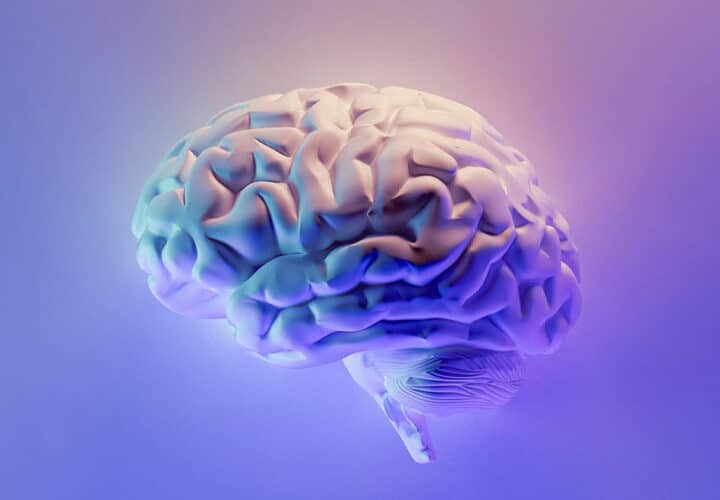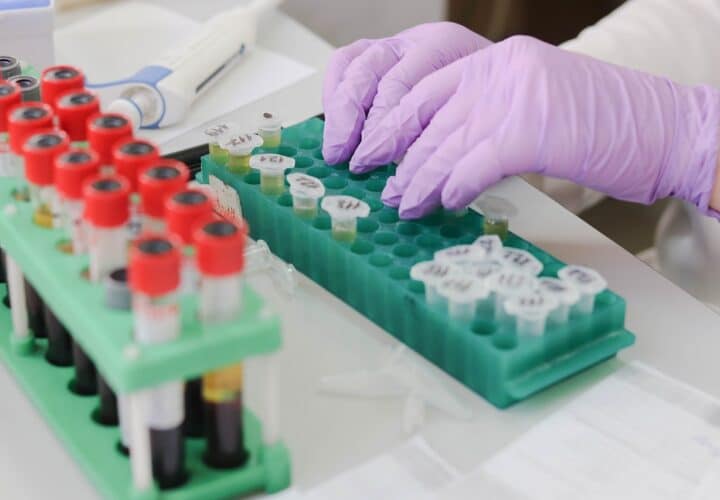An experimental, quick, low-cost Alzheimer’s diagnostic is designed to measure the brain's responses to flashing images on a screen.
Physicians are in a race against time to diagnose Alzheimer’s. While treatments and interventions can slow the clock, spotting the disease early is key to sustaining cognitive health. Intervening early may improve outcomes — while helping give families time to plan for the future.
“The big picture problem is that dementia is diagnosed too late,” lead researcher Dr. George Stothart at the University of Bath told Being Patient. “There’s this huge asymptomatic window that we’re missing detecting disease, and because we’re missing it, we’re missing the opportunity to intervene and implement lifestyle modifications or try new drugs.”
Stothart and his colleagues developed an innovative approach, bringing tools from cognitive science into the clinic, that can help detect dementia in as little as two minutes. All it requires is sitting down and watching a series of flashing images, whilst brain waves are measured using an electroencephalographic (EEG) cap.
According to Stothart, it “measures the electrical changes that occurs as a consequence of your brain performing its various functions.” The test — called the Fastball — is completely passive, transcending any language barriers and is cheap to scale in hospitals. Images are quickly flashed on a screen, with as many as three images per second. By adding in an image that appears more than once, EEG can provide a functional readout of recognition memory.
In a recent study, Stothart and his team tested whether Fastball could discriminate between healthy older adults and those with Alzheimer’s. Comparing recognition memory in 20 participants from each group, Fastball accurately determined which patients had Alzheimer’s.
“Healthy brains show a recognition response, and patients with Alzheimer’s disease, their brains don’t [show the recognition response] or it’s very marketably reduced,” Stothart explained.
How Fastball Compares to Current Diagnostics
Fastball simply requires digital tablets — which most hospitals already have — as well as caps for measuring brain activity. That makes implementing this tool and scaling it to multiple hospitals, even those with fewer resources, possible.
“The tests we currently use to diagnose Alzheimer’s miss the first 20 years of the disease, which means we are missing huge opportunities to help people,” Stothart said in a news release. “For decades now we have had tools in scientific research that have been able to probe how the brain is working, but we have never made the leap to a viable clinical tool for the objective assessment of cognition.”
Stothart explained that other cognitive tests take longer, require trained professionals and cost more to deliver. Current diagnostics rely on standardized neuropsychology assessments to measure cognition. However, by the time doctors or the person themselves spot these functional impairments, the brain has already experienced significant pathology due to amyloid plaque buildup.
Testing for biomarkers in the cerebrospinal fluid is invasive and expensive. Similarly, the cost and availability of brain scans impose further limitations. Compounding these expensive efforts, definitively diagnosing Alzheimer’s remains challenging.
An Early Diagnosis to Slow Down the Clock
Stothart’s team is testing Fastball in people at increasingly earlier stages of cognitive impairment, in longitudinal studies. One of these studies will track people with mild cognitive impairment using their tool to see if it could determine who might develop Alzheimer’s in five years. The researchers say this diagnostic might discriminate between Alzheimer’s and other forms of dementia.
“We are testing the tool in earlier and earlier stages of Alzheimer’s and expanding the type of brain function it can measure, to include language and visual processing,” Stothart explained. “This will help us to not only understand Alzheimer’s but also the many other less common forms of dementia.”
Stothart said early diagnosis can help drive the development of new disease-modifying therapies as it allows clinicians to stratify people by their risk of developing different types of dementia, while also providing plenty of time to introduce risk-reducing lifestyle measures — like a healthy diet or exercise.
The ultimate goal is to find ways to predict different types of dementia as early as middle age. Stothart’s team hopes that one day, these diagnostics would become commonplace during a check-up, along with other measures of health like blood pressure. Such tests, he said, could be conducted in low-resource areas due to the portability of the diagnostic.
He added that slowing down the clock may be key for turning the tide against this progressive disease.




I wish that was available years ago! My Mother was diagnosed after her Dr.(that she started going to in 2945) retired…..He didn’t notice anything was different about her. He told me he ‘didn’t listen to her ramblings…just nodded and said yes, ok, etc.’ She became increasingly worse,still he did nothing. The Dr. Who took over his practice spent 5 minutes with Mother, stepped out and called my sister and me to his office. When we walked in, he said “It’s Alzheimer’s”. THEN, we took care of her until she began wandering off and we had to put her into a nursing home.